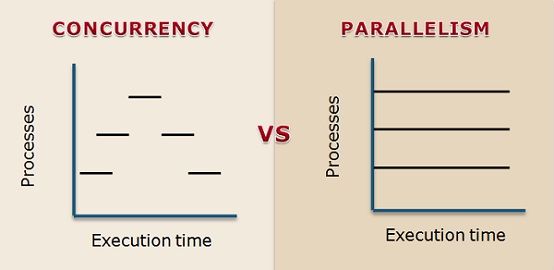
Concurrency vs Parallelism
Developers often confuse concurrency and parallelism, assuming both terms mean the same thing. While they are related, their underlying concepts and execution models are fundamentally different.
What is Concurrency?
Concurrency means dealing with multiple tasks at the same time but not necessarily executing them simultaneously. Think of it as interleaving tasks: a single processor (or thread) rapidly switches between tasks, giving the illusion of parallel execution. Concurrency is more about structure and design — how a program handles multiple tasks that could potentially overlap in time.
Analogy: Imagine a single cook preparing multiple dishes. While the pasta water is boiling, the cook chops vegetables for another dish. He’s not doing both at the exact same microsecond, but he is efficiently managing multiple tasks by switching between them.
What is Parallelism?
Parallelism, on the other hand, is about actually executing tasks at the same time. It requires multiple processors or cores. Parallelism is concerned with performance and speed — running tasks in true parallel to complete them faster.
Analogy: Think of two cooks working together in the kitchen, each preparing a dish simultaneously. They can finish faster because they are literally working in parallel.
Key Difference
Concurrency is like managing multiple tasks efficiently, while parallelism is like executing multiple tasks at the same time. A system can be concurrent but not parallel (e.g., a single-core CPU running async tasks), and it can also be parallel but not concurrent (e.g., multiple cores running separate, independent tasks with no overlapping logic).
Visual Explanation
The diagrams below illustrate how tasks are managed in concurrency versus parallelism:
Concurrency
Parallelism
Additional Reference
The following image also provides a clear side-by-side view of the two concepts:
